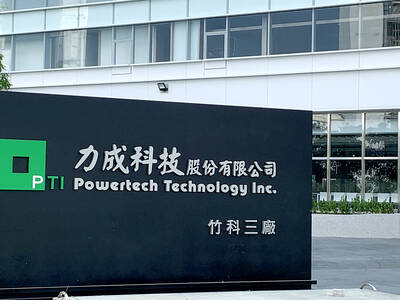If you are reading about the US presidential election, some of that news is likely to come to you from a “bot.”
Automated systems known as “bots” or “robo-journalism” have been around for years, but they are playing a bigger role in coverage this year amid technology advances and stretched media resources.
The New York Times, Washington Post, CNN, NBC, Yahoo News and nonprofit ProPublica are among news organizations using automated technology or messaging bots for coverage in the run-up to tomorrow’s vote or on election night.
News organizations are increasing use of both systems that employ algorithms to create text from data and automated bots delivering updates to smartphones.
The New York Times bot on Facebook Inc’s Messenger app launched earlier this year and uses short dispatches from reporter Nick Confessore, allowing users to interact to get detailed bot-driven news updates or polls.
“This is a natural follow-on to what we have been doing in conversational journalism,” New York Times product director Andrew Phelps said.
Those signing up for the bot receive periodic short messages, such as: “Hey it’s Nick. The race took a swerve this weekend.”
Confessore said it was challenging to find the right formula for “a really short form of storytelling” in a text message, but noted that the bot allowed readers to “drill down further” to get more details.
Phelps said bot usage has been “in six figures” with an audience that is younger and more global than Times readers.
“It’s an effort to meet people on messaging platforms,” he said. “We wanted to make it more personal, more interactive, to allow readers to feel more connected to the journalists themselves.”
While bots offer no immediate monetization, they can help to bring more people to the newspaper’s apps and Web site.
“This gets at the heart of relationship building,” Phelps said.
The Washington Post has its own bot using a robot icon, and plans to use artificial intelligence to update dispatches on election night.
The Post, owned by Amazon.com Inc founder Jeff Bezos, developed the system called Heliograf that is to help create hybrid human and computer-generated stories.
Heliograf allows the Post “to create stories that are better than any automated system, but more constantly updated than any human-written story could be,” said Jeremy Gilbert, director of strategic initiatives at the newspaper.
BuzzFeed Inc experimented with its “BuzzBot” on Messenger during this year’s political conventions as part of an effort to better connect with readers and participants at the events.
Amanda Hickman, who heads the BuzzFeed Open Lab, said bots offer “a one-to-one relationship, which gives us the opportunity to let people fine-tune the product they want.”
Meanwhile, nonprofit news site ProPublica’s election data bot, created with Google News Lab, updates every 15 minutes with election forecasts, campaign finance reports, Google Trends and other data.
Another nonprofit, the PollyVote Project, delivers similar dispatches based on poll results and other data.
“Every time we get new data, we create an automated news item,” said Andreas Graefe, a researcher at Columbia University’s Tow Center for Digital Journalism who is leader of the project funded by the Tow Center and Germany’s Ludwig Maximilian University of Munich.
“We can publish articles seconds after we receive the data, and we can do it in an unlimited amount,” Graefe said.
Graefe said several studies in Europe have shown that readers cannot tell the difference between a human or computer-generated news article.
“When you ask people how readable a story is, they rate the human article better, but when you ask them how credible it is, the computer is better,” he said. “We don’t really know why.”
Damian Radcliffe, a University of Oregon professor who follows automated journalism, said the trends over the current election season highlight gains made with technology.
“Bots and automation are increasingly becoming a part of how journalism is produced and content is being consumed,” he said.
Radcliffe noted that automated journalism has moved beyond simple formulaic content to projects such as the Los Angeles Times’ “homicide report” covering every murder victim and its “quakebot,” which delivers breaking news on earthquakes.
Radcliffe said many news organizations should look at these technologies even when resources are tight.
For election coverage, “they provide an opportunity to publish information more quickly than humans can,” he said.
While bots are not likely to replace reporters anytime soon, “they can free people up or allow parts of newsroom to do other things that could be valuable,” Radcliffe said.

Taiwan Semiconductor Manufacturing Co (TSMC, 台積電) has secured three construction permits for its plan to build a state-of-the-art A14 wafer fab in Taichung, and is likely to start construction soon, the Central Taiwan Science Park Bureau said yesterday. Speaking with CNA, Wang Chun-chieh (王俊傑), deputy director general of the science park bureau, said the world’s largest contract chipmaker has received three construction permits — one to build a fab to roll out sophisticated chips, another to build a central utility plant to provide water and electricity for the facility and the other to build three office buildings. With the three permits, TSMC

RUN IT BACK: A succesful first project working with hyperscalers to design chips encouraged MediaTek to start a second project, aiming to hit stride in 2028 MediaTek Inc (聯發科), the world’s biggest smartphone chip supplier, yesterday said it is engaging a second hyperscaler to help design artificial intelligence (AI) accelerators used in data centers following a similar project expected to generate revenue streams soon. The first AI accelerator project is to bring in US$1 billion revenue next year and several billion US dollars more in 2027, MediaTek chief executive officer Rick Tsai (蔡力行) told a virtual investor conference yesterday. The second AI accelerator project is expected to contribute to revenue beginning in 2028, Tsai said. MediaTek yesterday raised its revenue forecast for the global AI accelerator used

The DBS Foundation yesterday announced the launch of two flagship programs, “Silver Motion” and “Happier Caregiver, Healthier Seniors,” in partnership with CCILU Ltd, Hondao Senior Citizens’ Welfare Foundation and the Garden of Hope Foundation to help Taiwan face the challenges of a rapidly aging population. The foundation said it would invest S$4.91 million (US$3.8 million) over three years to foster inclusion and resilience in an aging society. “Aging may bring challenges, but it also brings opportunities. With many Asian markets rapidly becoming super-aged, the DBS Foundation is working with a regional ecosystem of like-minded partners across the private, public and people sectors

BREAKTHROUGH TECH: Powertech expects its fan-out PLP system to become mainstream, saying it can offer three-times greater production throughput Chip packaging service provider Powertech Technology Inc (力成科技) plans to more than double its capital expenditures next year to more than NT$40 billion (US$1.31 billion) as demand for its new panel-level packaging (PLP) technology, primarily used in chips for artificial intelligence (AI) applications, has greatly exceeded what it can supply. A significant portion of the budget, about US$1 billion, would be earmarked for fan-out PLP technology, Powertech told investors yesterday. Its heavy investment in fan-out PLP technology over the past 10 years is expected to bear fruit in 2027 after the technology enters volume production, it said, adding that the tech would